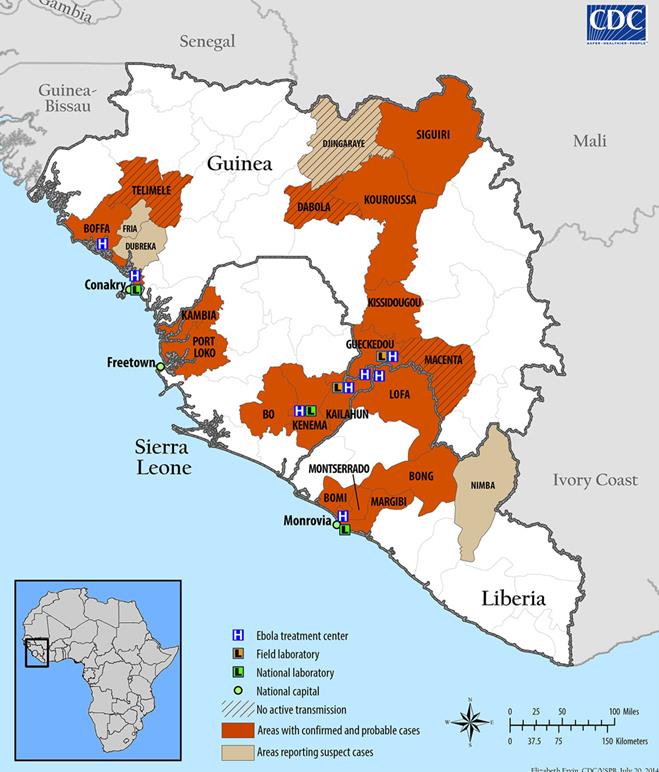-
Ebola Hemorrhagic Fever Outbreak in West Africa
The ongoing outbreak of Ebola in West Africa has heightened public and health care worker concern regarding the virus. As of July 27th, there have been more than 1,300 cases and 729 deaths (case fatality 55 percent) since March in the West African countries of Guinea, Liberia and Sierra Leone, making it the largest Ebola outbreak to date. Mortality can be as high as 90 percent. Here are several frequently asked questions with answers from Mayo Clinic Infectious Diseases experts:
Mayo Clinic infectious disease specialist, Dr. Pritish Tosh was a guest on Mayo Clinic Radio. Click here to listen to his segment on Ebola.
What is Ebola? How does it spread? Can it be treated?
Ebola is a viral hemorrhagic fever characterized by sudden onset of fever and malaise, accompanied by other nonspecific symptoms, such as myalgia, headache, vomiting and diarrhea. Some patients may have severe symptoms in later stages of the disease, including severe bleeding complications. The incubation period is usually eight to 10 days, but can range from two to 21 days. Patients are not infectious until symptoms occur. Transmission occurs through unprotected contact with blood or body fluids of an infected person. Ebola does not spread through casual contact, such as shaking hands or being near an infected person. No vaccine is available. Treatment consists of supportive care. No specific treatments are available.
Why is Ebola spreading so rapidly in some African countries?
The viruses that cause Ebola are often spread through families and friends, because they come in close contact with infectious secretions when caring for ill persons. Exposure to Ebola viruses is occurring in some health care settings in affected countries where hospital staff are not using appropriate protective equipment, such as masks, gowns and gloves.
Is this a global health emergency?
Ebola poses little risk to the U.S. general population at this time. While the Centers for Disease Control and Prevention (CDC) and the World Health Organization (WHO) have not declared a public health emergency, travel notices for affected countries have been announced.
What are the recommendations for persons planning trips to West Africa?
A travel medicine specialist should be consulted prior to travel to these countries. Additional guidance is on the WHO website
Could Ebola cases be seen at Mayo Clinic?
Historically, Ebola outbreaks have only occurred in African nations. However, it is feasible that a patient could be seen at Mayo Clinic with Ebola if he or she recently traveled to an affected country and acquired the illness there. Mayo Clinic is prepared to handle any potential cases of Ebola by following infection prevention measures, such as isolation precautions and use of appropriate personal protective equipment (PPE). The safety of patients and health care workers is a Mayo Clinic priority.
How can Mayo Clinic manage Ebola?
Mayo can manage Ebola by:
- Asking patients with symptoms compatible with Ebola about travel history (within 21 days to West Africa) and contact with sick people
- Notifying Infection Prevention and Control (IPAC) at your site of any suspected Ebola cases (There is no commercially available diagnostic test. Testing must be requested through public health authorities.)
- Applying standard precautions consistently for all patients at all times
- Placing hospitalized patients with suspected Ebola in Modified Droplet Precautions. In addition:
- Restrict room entry to essential personnel only.
- Implement visitor and employee logs to track entrance to the patient’s room. Examples of visitor and employee logs are on the IPAC intranet site.
- Limit transport of the patient out of the room.
Recommendations may change as the situation evolves.
*Note: This article is written by Greg Brown and originally appeared on the Mayo Clinic employee News Center.
Related Articles







